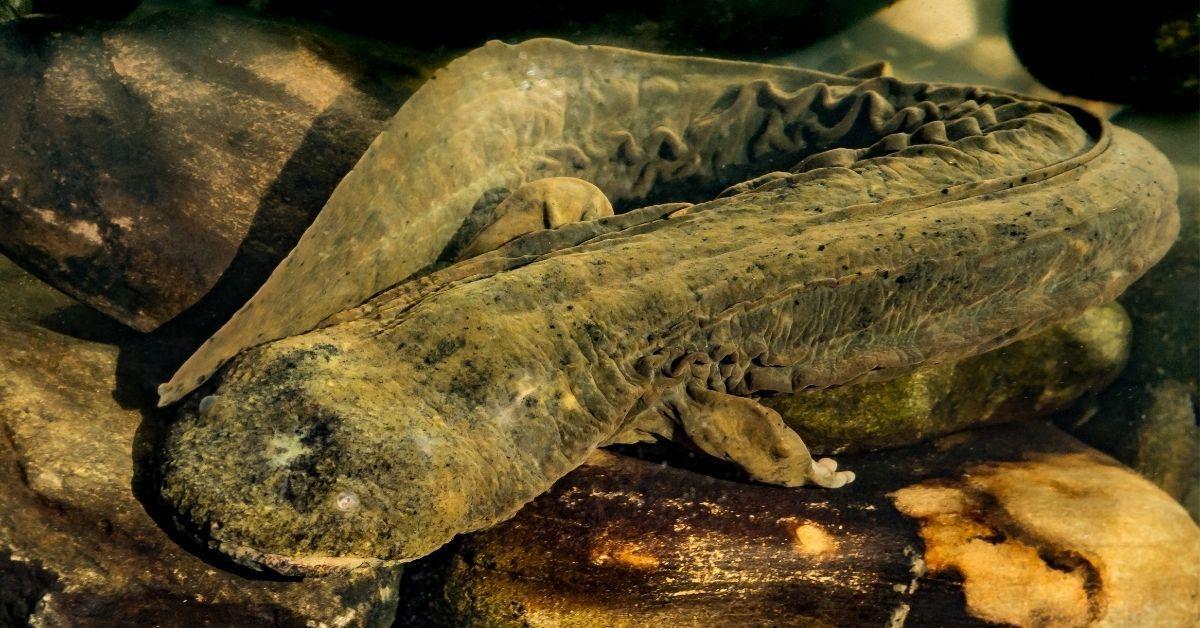Beloved Salamander Up for Endangered Species Protection


The eastern hellbender hasn’t changed much in 160 million years.
Weighing around four pounds and reaching about two feet long, the eastern hellbender is the largest salamander in North America and can live up to three decades.
Environmentalists have been trying to get Endangered Species Act protection for the salamander for about 10 years. It’s a tiny fraction of time for a species that has outlived the dinosaurs, but it may be just in time.
The U.S. Fish and Wildlife Service has proposed protecting the eastern hellbender as endangered. The action would protect the salamander from New York to Georgia.
“I literally burst into happy tears … Hellbenders may be cold and slimy, but they’re so fascinating that they evoke warm and fuzzy feelings,” said Tierra Curry, a senior scientist at the Center for Biological Diversity in a news release. “Protecting these giant salamanders will give umbrella safeguards to thousands of other species that rely on clean rivers.”
Hellbenders may not be cute or cuddly. Their nicknames are certainly unpleasant: “snot otter” and “devil dog.” But the hellbender is a living fossil that’s perfectly adapted to living life on river bottoms. The hellbender absorbs dissolved oxygen in the water through its skin. It finds shelter and lays its eggs under rocks and in crevices on the bottom of rivers.
Now, many streams where hellbenders once lived are too polluted to support them. In addition, dams have slowed or cut off the free-flowing water they need. Water that becomes slow-moving, warm or polluted holds less oxygen. Sedimentation, which is when soil from farms and construction sites washes into streams, covers nesting areas and shelters.
The hellbender population has declined rapidly in the past few decades throughout their 15-state range, which stretches from New York to Georgia and west to Mississippi. Scientists estimate only 12% of eastern hellbenders are successfully reproducing.
The hellbenders living in the Blue Ridge Mountains, especially hellbenders in western North Carolina, were considered the healthiest population. Hurricane Helene changed all that. Floodwaters devastated habitats, and thousands of hellbenders were washed out of rivers and streams and found dead in debris. Fortunately, some hellbenders that were found in pools of water as floodwaters subsided were returned to the river. In the long term, forest damage and contamination from the storm will continue to pollute these areas.
This means the protection couldn’t come soon enough.
“We have to be paying more attention to the health of our nation’s rivers and streams, and that means paying more attention to the critters that live in them,” Erin McCombs, southeast conservation director for American Rivers, a nonprofit environmental advocacy organization, told the Associated Press. McCombs has been working to remove abandoned dams on western North Carolina rivers to improve hellbender habitat.
“When species like the hellbender, which are reliant on free-flowing and clean water, are declining, alarms need to be going off, because we’ll feel the impacts next,” McCombs added.
The Center for Biological Diversity petitioned and won protection for the Ozark subspecies of hellbenders in 2011, and eastern hellbenders located in Missouri in 2021. It sued seeking protection for all eastern hellbenders. Now, all hellbenders in the U.S. are protected or proposed for protection under the Endangered Species Act.

Flooding from the storm presents a host of challenges to the vulnerable eastern hellbender, the largest salamander in the Americas.